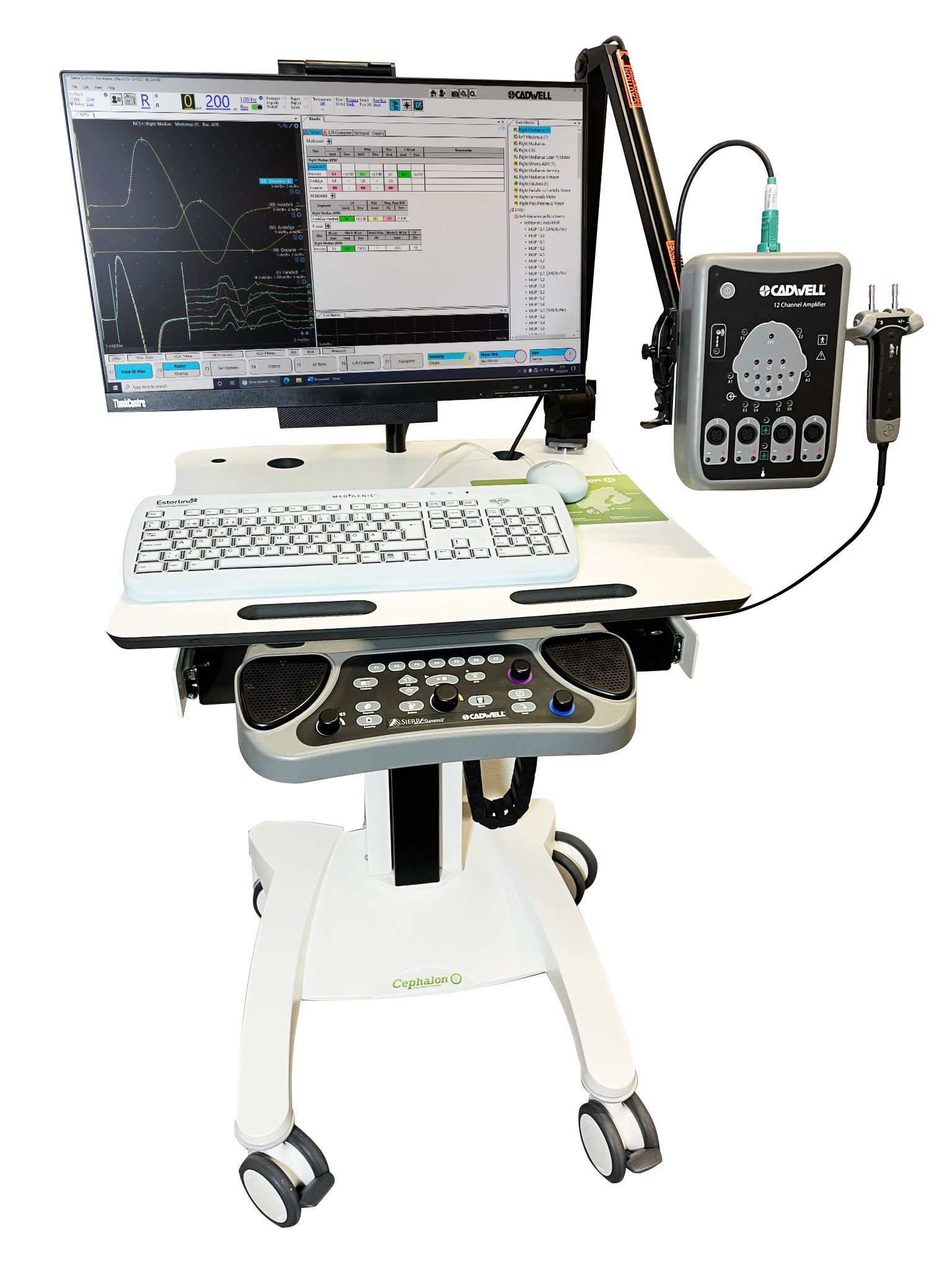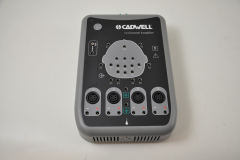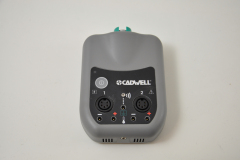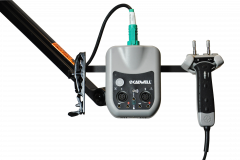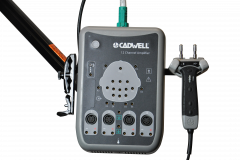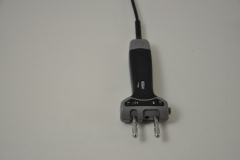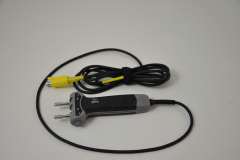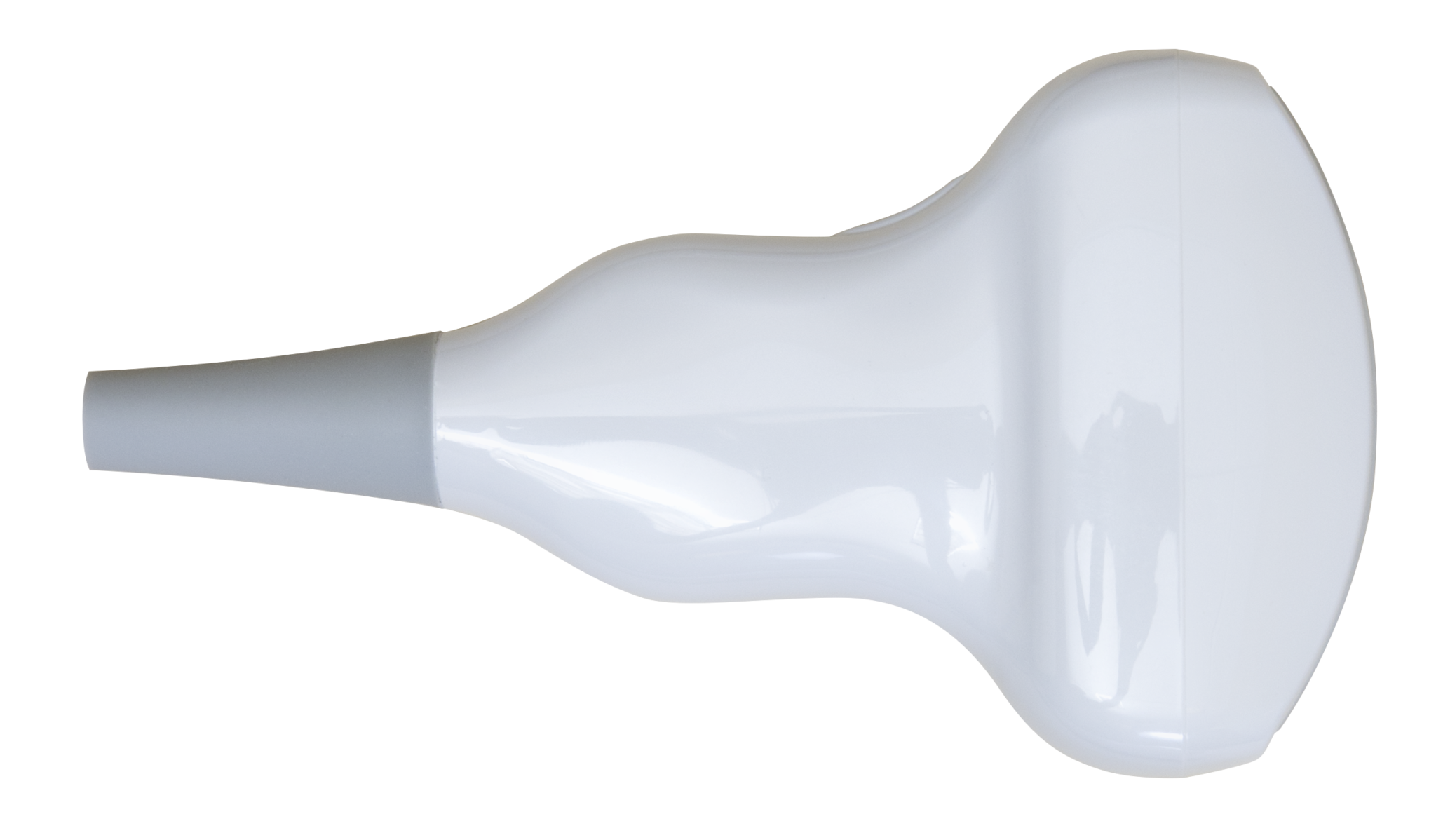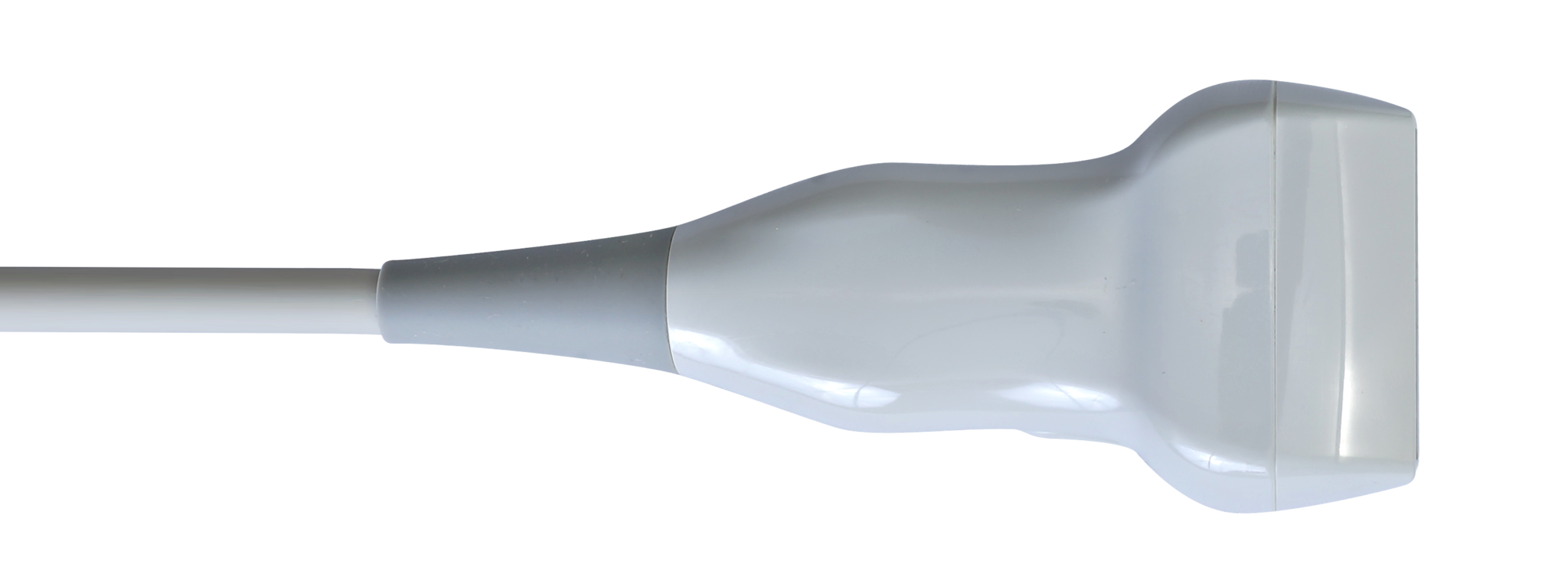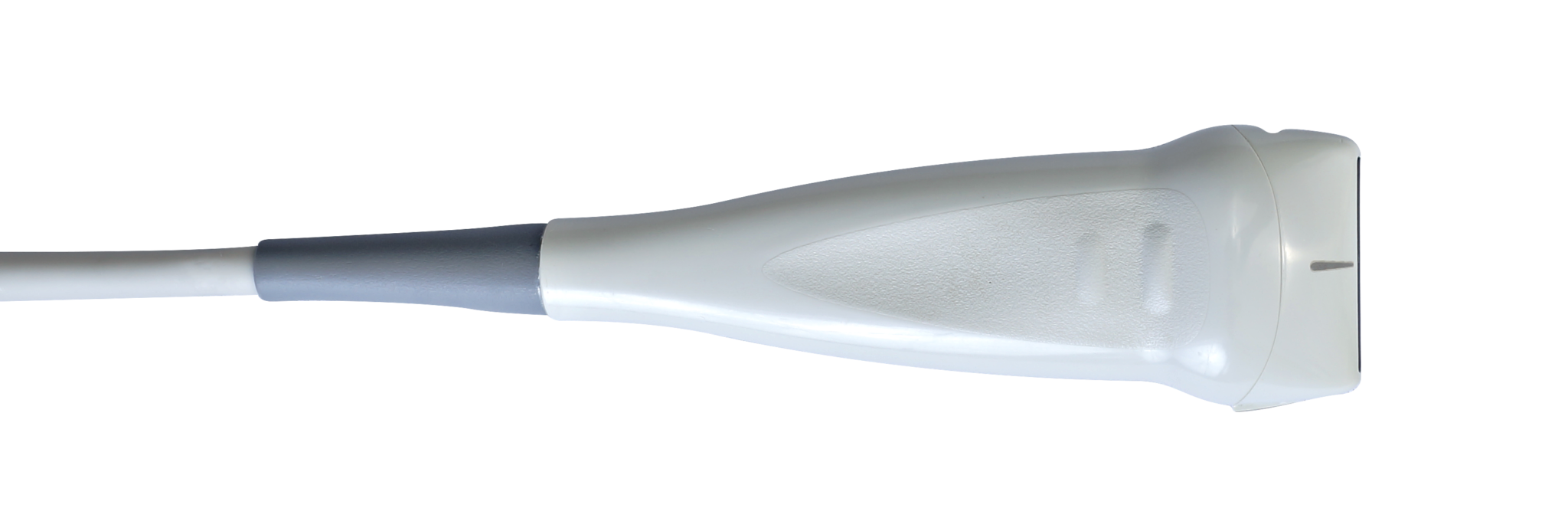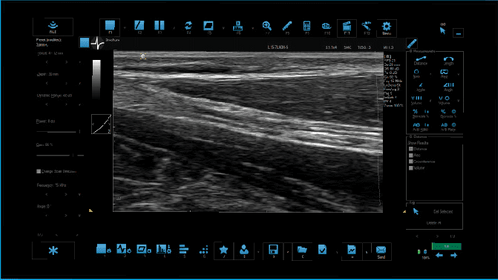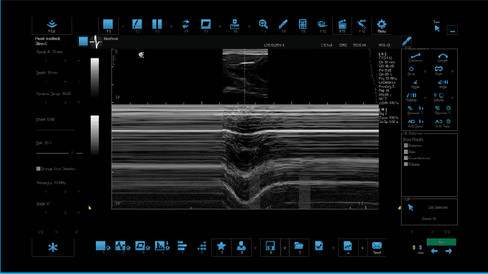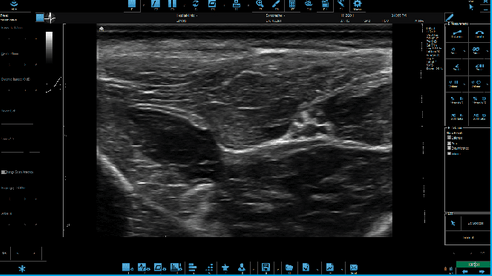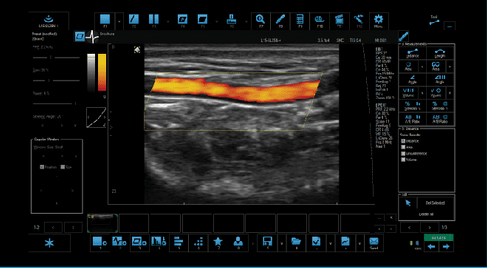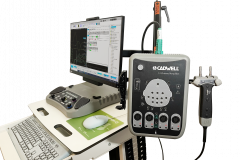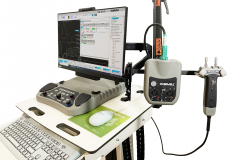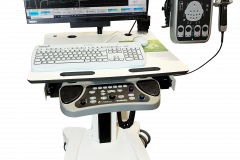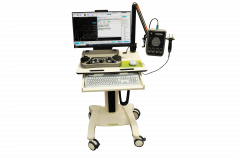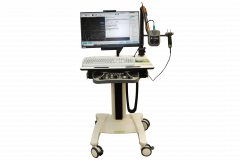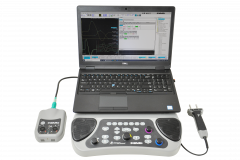Electrical Stimulator
Number: 1 or 2.
Type: Hand-held, constant-current electrical stimulator with stimulus intensity dial, single,repetitive, store, polarity, and three user programmable buttons on handle.
Includes high flex-life cable.
Pulse duration: 50 to 1000 μs width, adjustable in 50-μs increments.
Pulse shape: Monophasic or Biphasic.
Pulse types: Single, Pair, Train, Dual, Dual Train, Triple.
Repetition rates: 0.1 to 200 pps depending on stimulus type and sweep speed.
Probes: 2 removable stainless steel, 2.5 or 1.5 cm center-to-center spacing.
Probe positions: Adjustable+45 to -90 degrees without removing probe tips.
Electrical range: 0 to 100 mA, 400 V maximum voltage.
Resolution: 0.03 mA.
Safety features: Over current fault detection, High impedance detection.
Isolation: Type BF.
Auditory Stimulator
Transducer: Sennheiser HDA 280 headphones (37-ohm), Insert earphones (10-ohm) and Bone transducer (10-ohm)
Presentation: Left, right, or bilateral.
Intensity units: nHL/SPL.
Intensity increments: 1, 2, 5, or 10 dB.
Stimulus types: Click, Tone Burst, Tone Pip 202, Tone Pip 212.
Stimulus polarity: Rarefaction, condensation, or alternating polarity.
Repetition rates: 0.1 to 90 pps depending on stimulus type and sweep speed.
Clicks: 50, 100, 200, 500 or 1000 μs square wave.
Tone Frequencies: 250, 500, 750, 1k, 1.5k, 2k, 3k, 4k, 6k, 8k Hz.
Tone Burst: 4 to 100 ms rise/fall, 4 to 2000 ms plateau.
Tone Pip: 1 to 40 cycles rise/fall, 0 to 500 cycles plateau.
Tone Envelope: None, Linear, Gaussian, Hanning, Blackman.
Decibel range: -10 to 107 dB nHL (140 pSPL) depending on stimulus type, frequency and transducer.
White noise masking: Contralateral masking from 0 to 80 dB below stimulus level.
Visual Stimulator
LCD Monitor: LCD monitor for black and white, pattern-reversal checkerboard stimulation.
Features center fixation target, independent quadrant and half-field stimulation.
Square sizes: 1, 2, 4, 8, 16, 32, 64 or 128 checks.
Combination of Sierra Summit and monitor must meet requirements of EN60601-1-1.
Connection Type: SVGA, HDMI, DVI, or Display Port from Laptop or Desktop PC.
VEP Calibration Sensor: Included with VEP software (for automatic calibration of LCD video delay).
LED Goggles: Red flash, 5 ms duration. Left, right or bilateral presentation.


